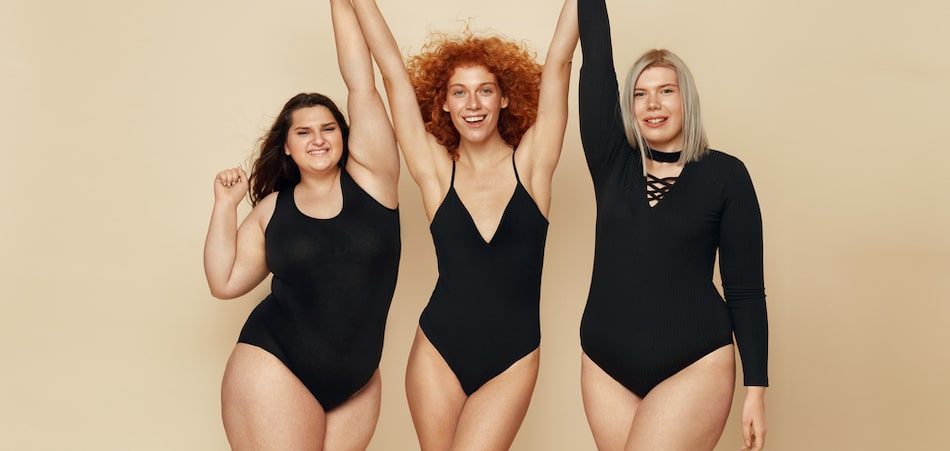
Traditional standards in the modeling industry continue to evolve and change with the times but, in general, the public thinks of models as very thin women walking the runway. In addition, the modeling industry has been accused of promoting unhealthy body standards and eating habits in the past so models can look even slimmer. However, there are some changes in body types being promoted in the world of modeling and that includes some women having medical procedures in order to gain a look that is curvier in appearance.
According to a study published in the medical journal, Cureus, the increase in the popularity of plus-sized models might be one of the contributing factors in a new trend being observed in the field of plastic surgery. This trend finds more people making the decision to have breast implants and butt lifts to enhance their appearance and give them a look that is more contoured and curvaceous.
The author of the study, Professor Neelam Vashi of Boston University, said, “Plastic surgeons may see an increased interest in procedures – including breast and buttock augmentation – that embrace a curvaceous plus size body type.”
For example, butt lifts are one of the most popular and fastest growing cosmetic surgery procedures in the world. The Aesthetic Society reported a total of 61,837 buttock augmentations, including both butt implants and fat grafting, were performed in 2021. In this procedure, butt implants can be placed in the buttocks, or the patient can have fat removed from one part of the body so it can be injected into the butt (in a procedure known as a Brazilian butt lift).
Even with the popularity of butt augmentation, there are some health problems that have been linked to them in the past. In 2018, there was a warning issued about the risk of death related to the performance of a Brazilian butt lift. The warning was issued by The Task Force for Safety in Gluteal Fat Grafting which is an organization formed by the American Society of Plastic Surgeons, the American Society for Aesthetic Plastic Surgery, the International Society of Aesthetic Plastic Surgery, the International Society of Plastic Regenerative Surgeons and the International Federation for Adipose Therapeutics and Science. In their warning to plastic surgeons across the country, the Task Force stated a Brazilian butt lift had a rate of death “far greater than any other cosmetic surgery.”
One of the reasons Brazilian butt lifts seem to be continuing in popularity is the appearance of plus-sized models on the red carpet such as Tess Holiday and Ashely Graham. Vashi noted, “The fashion industry has also acknowledged the increasing popularity of plus-size models by representing curvaceous figures within their marketing campaigns – and even altering models’ figures with padding.”
 A social media data analysis showed that the average following on social media platforms for the Top Ten plus-size models was 3.8 million (as opposed to an average of thirty-eight million for more traditional models). Even with this statistic, the study also found there was not any major difference found between comments, “likes,” and posts between the plus-size models and more “mainstream” models.
A social media data analysis showed that the average following on social media platforms for the Top Ten plus-size models was 3.8 million (as opposed to an average of thirty-eight million for more traditional models). Even with this statistic, the study also found there was not any major difference found between comments, “likes,” and posts between the plus-size models and more “mainstream” models.
The researchers behind the social media data analysis felt the reason for this was “cause and effect.” In other words, the general standards for body image and inclusivity are always evolving in the United States. The changes in the public perception of what counts as a standard or acceptable look for models has increased the demand for cosmetic surgery procedures that could give someone a look that is plus size in appearance.
According to Vashi, “The American standard of beauty appears to idolize extreme thinness as seen in Victoria’s Secret models and their diminishing body sizes. We sought to explore the impact of plus-size models by reviewing their body size metrics and social media presence to better understand their emerging role in the current standards of beauty.”
The study consisted of 159 plus-size models in order to determine their average height, waist, hips, bust, and dress size. In addition, the measurements for the Top Ten traditional or mainstream models were obtained using information from Forbes.
The research showed the waist-to-hip ratio was low between the two sets of models. The research found that the waist-to-hip ratio remained low between both groups, showing that there is a fixed standard of beauty.
Vashi shared, “Societal pressures on retailers to incorporate an increased body diversity that fully represents their consumer base of society with an average dress size of 14 to 16 and BMI of 26.5 is likely contributory to the increasing pressure of plus-size models.”
Vashi also noted that no plus-size models were listed among the Top Ten models that are the highest-paid according to Forbes. While models of all sizes can gain additional exposure and popularity from appearances in movies or on television, Vashi says, “Further research needs to be done regarding the public acceptance of body types without an ideal waist-to-hip ratio in the body inclusive model.”
- MA